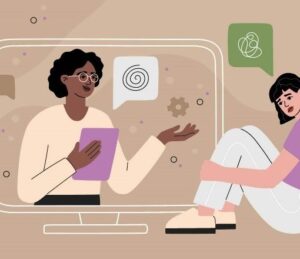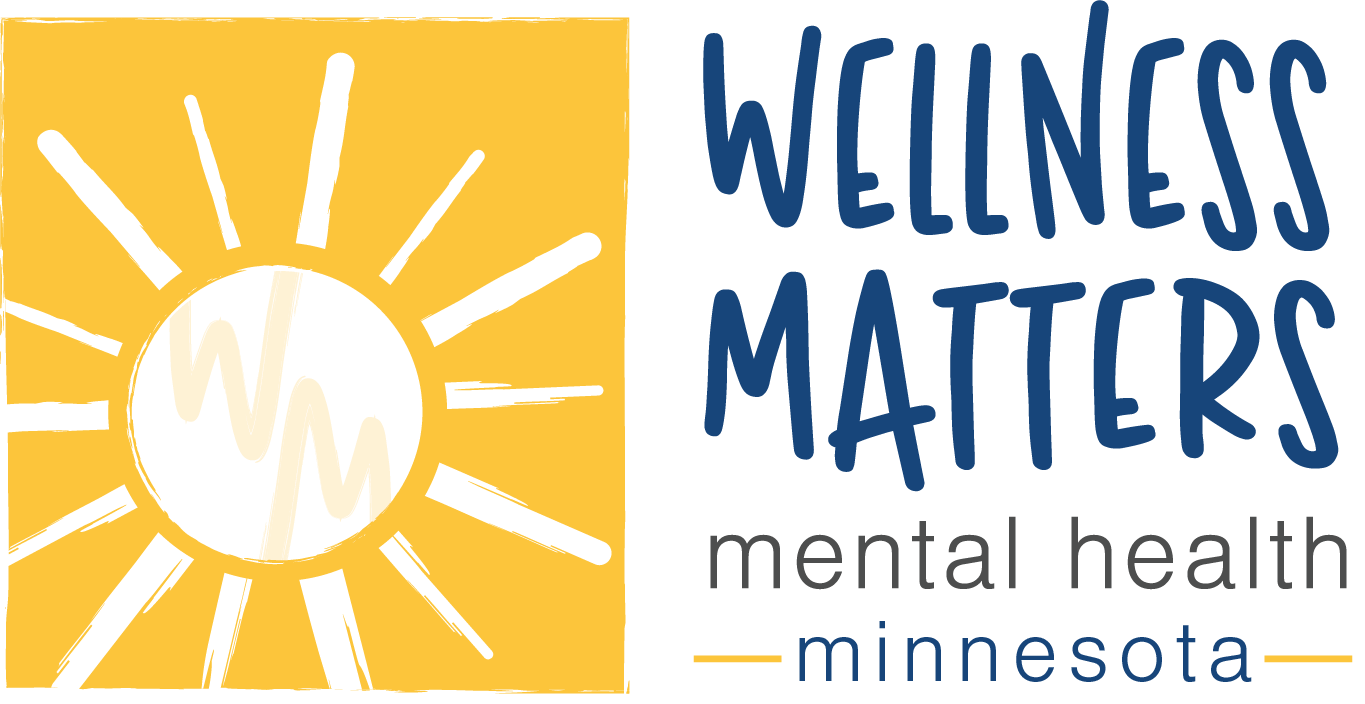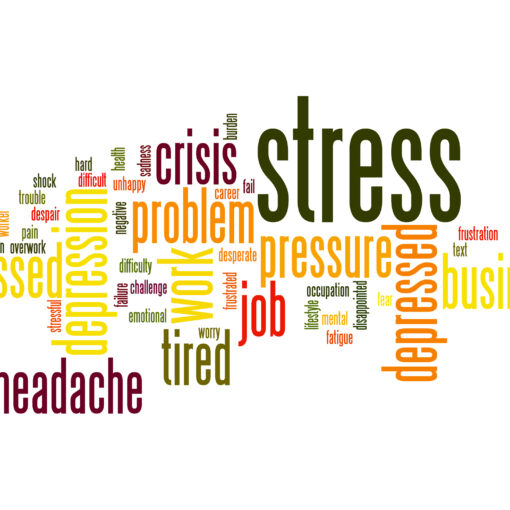By Emily Pierson, M.Ed., Licensed Clinical Professional Counselor
Are you a high school student during these “uncertain times”?
Let’s talk about the obvious things first. High school is hard. The transition from middle to high school brings academic changes. Suddenly there is pressure to perform in the classroom to prepare for college. There are more activities to participate in, more classes to take, and typically, more people to meet. And if that wasn’t enough, there are also romantic relationships, friendships and family members to balance too. We won’t even get into the taboo topic of hormones and learning about yourself. All of that can be challenging to work through at times. It’s been even more difficult recently, considering we’ve been in a global pandemic for almost two years.
COVID has changed a lot of things recently everyone. School has never looked more different. Distance learning, masks in schools, and social distancing has complicated and changed the learning environment. As strange as it seems to think about, some students have never experienced “normal” high school. If you were an 8th grade student when the pandemic began, you may still not know what “normal” (i.e., pre-pandemic) high school looks like. If you are older, it may seem like life without social distancing, quarantines and masks is a distant memory. It’s no wonder research shows that teens are struggling to navigate this “new normal”.
Effects of the Pandemic and Distance Learning

While the changes to the high school environment during the pandemic may have been necessary, they did not come without consequences. Routines were lost. Access to teachers was reduced. Sports, activities, clubs and extracurriculars were gone. Learning environments were changed dramatically. In a comparative study conducted by psychologists in Chicago, 32,000 families were surveyed about emotional changes they noticed in their children (1). Since schools closed in Illinois, nearly 32% of children were identified as being lonely, compared to 4% pre-pandemic. Twenty-four percent of children were labeled as angry, compared to 4% before school closed. Discussing plans for the future fell 13% in households. Positive peer relationships declined 13.5%. Stress, anxiety and depression levels increased approximately 10% in all categories.
This is just one study, in one area of the country that was performed and released so far. More information is needed to understand the full effect of changes to the school environment. Some districts were able to go back to in-person learning at the beginning of the 2020-21 academic year. Others were unable to do so until the Spring of 2021. However, when students did go back to school, it was different than before.
Grief and Loss, Anxiety and Depression as a Result of Isolation due to COVID-19
Traditionally, when we think of grief and loss, it typically involves a death. However, it’s ok to grieve something besides the loss of a loved one. For example, it’s ok to grieve the loss of the way things were before the pandemic. It’s ok to want to play sports without a mask or sit close to your friend in class. It’s ok to wish you could perform a theater production in front of a live audience. It’s normal to want to be “over” the idea of quarantines and contact tracing. It’s ok to want to experience “normal high school” (if there is such a thing). It’s also ok to miss hanging out with or hugging your friends. School has changed. Activities have changed. The way we interact with one another has changed.
Unfortunately, a loss of normalcy can also mean mental health struggles. Extended periods of isolation and loneliness can lead to depression and other physical concerns (2). The unknown and uncertainty can lead to anxiety and other stress related issues. Will we get to stay in school this winter? Will we get to play sports all year? Will theater and music programs get to perform? When will I get to see my friends without worrying about contract tracing? When can I see older family members without worrying about getting them sick with COVID? When can we be mask-free in school and other indoor places? These are all valid questions. The feelings of frustration, anxiety, sadness, or depression that accompanies them are real and valid as well. Pay attention to signs for these mental health issues. They may include (3):
- Persistent sadness
- Excessive worry
- Loss of joy in activities
- Withdrawing even more from others
- Avoiding social engagements or activities
- Anger or irritability
- Changes to mood, behavior, or personality
- Weight changes
- Difficulty sleeping or sleeping too much
- Difficulty focusing or concentrating
- Recurrent headaches, stomach aches or other ailments
If you are experiencing these symptoms, pay attention to them. They are your body’s way of telling you that something might be wrong. Grief and loss and other mental health issues can also come in waves. One day you may feel ok. The next may be difficult to get through. If you are feeling this way, it’s ok to reach out for help.
What to Do If You Are Struggling
If you are struggling with the effects and changes that resulted from COVID-19, you are not alone. Here are ideas for how to cope with the difficulties and changes that came with the pandemic (2, 3, 4):
- Recognize your loss: The COVID-19 pandemic has caused a lot of changes and has, essentially, taken a year or more away from everyone. School, sports, activities, friendships and family relationships all changed or were taken away. It’s ok to grieve these losses and to feel upset about them.
- Focus on your health: It’s very easy to get stuck in a rut during quarantine or isolation. Even when the world starts opening up, it can be difficult to get back into a regular, healthy routines. Make an effort to focus on your health. Practice healthy eating, hydrating, and sleeping habits. Exercise and move your body. Go outside to breathe fresh air and get some sunshine. If you have felt unhealthy lately, these basic steps can make a world of difference.
- Reconnect with friends and family: If you are able, see friends and family in person. Yes, it is different than ‘talking’ to them via text or messenger. Being physically near someone can be helpful to our mental health. Being in proximity with friends helps us to regulate our emotions. Make sure you are staying safe while finding ways to reconnect with other, real life human beings. If you can’t be in the same room, consider facetime or zoom. It may be helpful to see a friendly face.
- Talk about it: Chances are, you are not the only one in your area that is struggling with the effects of the pandemic. Talk to a trusted friend about your feelings. It may be helpful to know that other people your age are experiencing similar things. You may be able to find other ideas for how to manage these changes.
- Practice healthy coping skills: As cliché as it sounds, healthy coping skills are important.
If things are still shut down in your area, you may have a lot of time on your hands. Take this opportunity to try something new. Here are a few ideas:
- Learn a new skill
- Create art
- Practice an instrument
- Bake or cook a new recipe
- Learn a new board game
- Read a new book
- Find a new hobby
- Do something that a family member enjoys
- Redecorate or rearrange your room
- Seek professional help: While talking to friends or family members can be helpful, you might need something more. If you have tried other healthy coping skills and still feel anxious, depressed or as though you are struggling, seek professional help. Therapists and counselors are trained to help others with these feelings.
- Telehealth or video sessions: The pandemic has resulted in the mainstreaming of the use of electronic devices to obtain medical and mental health services. You can access the services of trained professionals privately without having to physically go to a clinic. This is especially helpful in rural areas. And the built in “social distance” inherent in telehealth makes it worry-free from concern about contracting the virus. Furthermore, many teens enjoy the extra privacy of not being seen attending counseling appointments.
The pandemic has changed school, activities, sports and how we interact with others. It has been frustrating, anxiety provoking, and depressing for most people. But you don’t have to go through it alone. There are people who can help, and healthy ways to manage these feelings. Sometimes the hardest part is admitting that you need help. If you need something, don’t be afraid to reach out. If you don’t get what you need, ask again or ask someone else. The world may look a little different nowadays. But you can get through this.
—————————————————————————————————————————————–
About Emily

Emily is a mental health therapist providing telehealth services for Wellness Matters. She uses a strengths-based perspective to improve mental/emotional well-being, relationships, and physical health. She is passionate about helping adolescents and adults set and meet realistic, achievable goals, while also meeting them where they are in their journey.
Emily was born and raised in Alaska, where she received her Master’s degree in counseling from the University of Alaska Fairbanks. After moving to the “Lower 48”, she has been working as a therapist for the past four years.
Emily has immediate telehealth appointment openings available through Wellness Matters LLC. Read more about Emily and other Mental Health Therapists in the “About Us” tab.
References/Resources
1. How the Closure of In-School Learning Damaged U.S. Children’s Mental Health During the Pandemic. Retrieved from: https://time.com/5964671/school-closing-children-mental-health-pandemic/. Accessed November 10, 2021.
2. The Growing Mental Health Effects of COVID-19 for Young Adults: The pandemic, school closures, and social isolation are all taking a serious toll on the lives of high school and college students. Health Central. Retrieved from: https://www.healthcentral.com/article/mental-health-effects-of-covid-19-on-students. Accessed November 10, 2021.
3. Mental Illness in Children: Know the Signs. The Mayo Clinic. Retrieved from: https://www.mayoclinic.org/healthy-lifestyle/childrens-health/in-depth/mental-illness-in-children/art-20046577. Accessed November 10, 2021.
4. Coping with Grief and Loss – Mourning Changes Since COVID-19. Purdue University. Retrieved from: https://www.purdue.edu/caps/covid-19/coping-with-grief.html. Accessed November 11, 2021.




